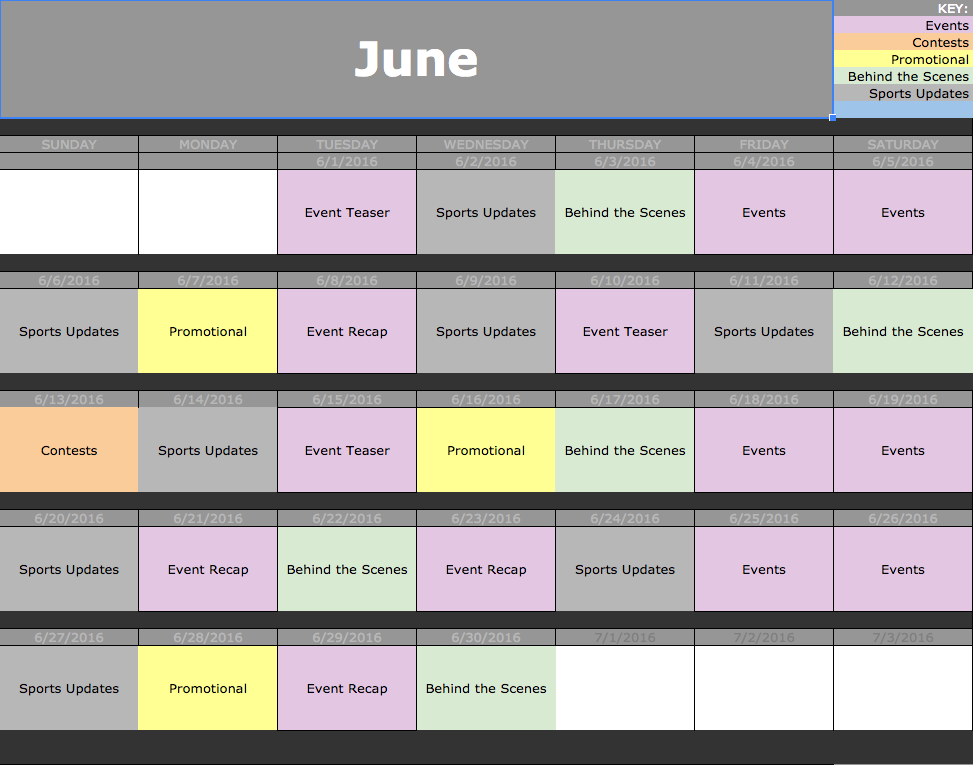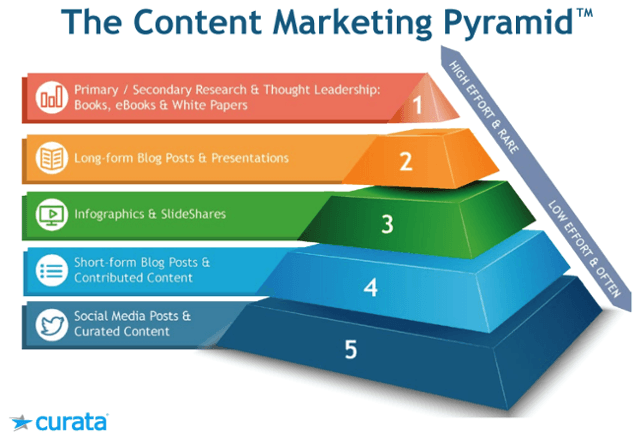By Brooke Sellas, {grow} Contributing Columnist
A question: How can I scale content marketing efforts?
I have tasks assigned to myself in our project management tool that ping me each month about creating more in-depth content. I’m constantly resetting due dates and putting this off.
Are you in the same boat?
While it may be easy to post daily to our social media channels, it’s much more difficult to develop rich branded content that promotes thought leadership — like an eBook or white paper.
So, selfishly, to help myself I’ve done a little research and created a plan to help me scale content marketing initiatives.
Hopefully, it helps you too.
Scale Content Marketing With A Solid Foundation
The foundation of how we scale content marketing at B Squared (for ourselves and our clients) looks something like this:
- Create original content
- Curate relevant content
- Plan content media mix/place into a publishing calendar
- Distribute above content
- Repeat
“Repeat” seems redundant, but trust me, consistency is key for creating content. I know this is a gap for me when it comes to creating content that has more “oomph.”
Let’s dig deeper into steps 1-4 to understand the solid foundation we need to scale content marketing efforts.
Creation
We try to take a data-driven approach to creating content for ourselves and clients.
One of the best ways to do this is by looking at your seesaw data — which is our way of saying that we look at the top performing and bottom performing content each week.
As far as what to create, we look at small to big:
- Social media posts
- Blog posts
- Guest posts
- Visual content (easy: social images; hard: infographics)
- Long-form blog posts and presentations
- Interactive content
- eBooks
- White papers & case studies
While we’ve created white papers and case studies for client education and pitch decks this year, we’re still lacking in creating that bigger content for potential clients.
Curation
Curation is an often-argued topic. We subscribe to the school of thought that says curation is a good thing.
However, simply retweeting someone’s blog post isn’t really curation. Curation, by definition, is taking third-party content and presenting it in a meaningful way. That means you have to put some thought into what you’re sharing and add your own .2 cents.
For some of our high-volume clients, around 40% of what we share can be curated content!
Plan
I don’t know where we’d be without out publishing schedules. We plan two weeks (sometimes more) in advance, but don’t get too far out there because curated content can become stale if you’re not careful.
We like to look at an overall media mix and then drill down to the day-by-day.
Here’s an example of the media mix:
And here’s an example of what one week of curated and created content looks like:
We are extremely organized; there isn’t ever a day or time when we panic and try to scramble for content — it’s always there, vetted, approved, and spelled out so anyone can post.
Distribute
There are two ways we typically distribute content: manually and through automation.
The tools we use to help us automate content distribution and help us scale content marketing efforts are (in no particular order):
And if you really want the deep dive with content distribution, here’s a post I wrote for {grow} a while back that gives 28 tips and a detailed look at how we handle it.
Now I just need to take all of this lower-level organization and scale content marketing initiatives UP.
But how do I do that??
The Content Marketing Pyramid
Enter Curata. They created the Content Marketing Pyramid, which aims at helping you create more content with less.
Currently, we work from a bottom-to-top strategy when it may be more beneficial for us to employ a top-to-bottom approach and scale content marketing efforts.
Here’s a look at the Pyramid:
If we flip the switch and work from one down to five, we can create more content with less and:
- Create more core content (level 1)
- Produce assets from core content (levels 2-4)
- Generate micro-content (level 1)
It’s not to say the bottom-to-top strategy we’ve been using doesn’t work, but you can clearly see how switching to a top-to-bottom strategy can help us be wildly efficient with our content marketing efforts.
And yeah, flipping the Pyramid isn’t going to be an easy task; it’s going to take careful consideration and planning. But I’m excited about this new approach and how it can help our team scale content marketing endeavors.
What do you think about the Pyramid method? Is it something you’d consider to help scale content marketing at your company? Let me know in the comments below!







